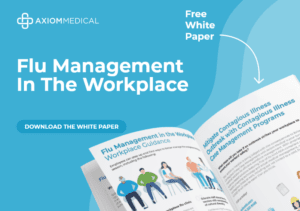 With the coronavirus now spreading throughout 22 countries with over 9,900 cases and over 213 deaths as of this publication date, employers in the United States are faced with multiple questions. What is the threat to the U.S workforce? How is the virus transmitted? How can we protect employees?
With the coronavirus now spreading throughout 22 countries with over 9,900 cases and over 213 deaths as of this publication date, employers in the United States are faced with multiple questions. What is the threat to the U.S workforce? How is the virus transmitted? How can we protect employees?
Understanding the Coronavirus
According to the World Health Organization, coronaviruses are a large group of viruses that can cause illnesses as minor as a cold, or as serious as Middle East Respiratory Syndrome (MERS) and Severe Acute Respiratory Syndrome (SARS).
The CDC indicates the 2019 Novel Coronavirus, or 2019-nCoV, is a new respiratory virus first identified in Wuhan, Hubei Province, China.
Public health officials and partners are working hard to identify the source of the 2019-nCoV. It is believed this virus originally emerged from an animal source, but now seems to be spreading from person-to-person. It’s important to note that person-to-person spread can happen on a continuum.
Coronavirus Symptoms
The U.S. Centers for Disease Control and Prevention explains the new virus can cause symptoms including:
- Fever
- Cough
- Shortness of breath.
Importantly, experts warn this new virus can be transmitted by infected individuals who are not showing any symptoms at all.
The CDC says symptoms of the “2019-nCoV” virus can appear in as few as two days or as long as 14 days after initial exposure.
Travel Considerations
The U.S. State Department issued a travel alert Monday, January 27, advising Americans to reconsider traveling anywhere in China due to the outbreak. It issued a stronger level 4 warning for the province where Wuhan is located, stating: “Do not travel to Hubei province, China” due to the coronavirus outbreak.
The CDC is urging people to seek medical care right away if they traveled to Wuhan in the past two weeks and have a fever, cough or trouble breathing. It says older adults and people with underlying health conditions may be most at risk for severe illness from the virus.
“Preliminary information suggests that older adults and people with underlying health conditions may be at increased risk for severe disease from this virus,” it said.
Workplace Prevention – Best Line of Defense
There are currently no vaccines available to protect you against human coronavirus infection. You may be able to reduce your risk of infection by doing the following:
- Wash your hands often with soap and water for at least 20 seconds
- Avoid touching your eyes, nose, or mouth with unwashed hands
- Avoid close contact with people who are sick.
FREE EBOOK GUIDE
CORONAVIRUS (COVID-19)
What You Need to Know to Protect the Workplace

Holly is an ER nurse by trade, but loves content marketing. She was born outside the box and believes everything is better with “sprinkles and sparkles”. She is passionate about impacting lives and uses marketing as her platform for sharing practical solutions to address real life occupational health challenges.
Find out more about our Injury Case Management services or our Occupational Health Programs.










